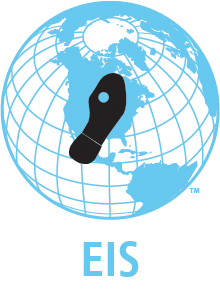You are here
A History of Protecting America: The Epidemic Intelligence Service
Who is responsible for protecting America from the spread of disease and other global health threats? Who works day and night domestically and globally to ensure epidemics in other countries do not hit American soil? The Epidemic Intelligence Service (EIS), also known as disease detectives, are the ones responsible, and they take this role very seriously.
Established in 1951, EIS is a program administered by the Centers for Disease Control and Prevention (CDC) as a two-year postgraduate program of service and on-the-job training for health professionals interested in the practice of epidemiology. Each year, 70–80 people are selected and assigned to CDC or state and local health department positions. EIS officers conduct epidemiologic investigations, research and public health surveillance nationally and internationally. Since 1951, more than 3,500 EIS officers have responded to requests for epidemiologic assistance within the United States. These EIS Officers serve on the public health protection frontlines.
The term “shoe-leather epidemiology” is used to describe the investigation style epidemiologists conduct. Shoe leather refers to old style detectives who walked the streets wearing out shoes while solving cases. Similarly, EIS Officers have to engage in detailed, one-on-one conversations with each new patient and their loved ones and acquaintances to solve the mystery of a disease and the source of an outbreak.
 So what is the role of EIS today? Most people are familiar with diseases like Ebola, Zika and Norovirus. You name a disease, and disease detectives have chased it. During the Ebola epidemic, CDC deployed 156 of 158 EIS officers. These officers were deployed to 17 countries, eight states and CDC’s Emergency Operations Center. With Zika virus, officers are continuing to be deployed as the current outbreak continues.
So what is the role of EIS today? Most people are familiar with diseases like Ebola, Zika and Norovirus. You name a disease, and disease detectives have chased it. During the Ebola epidemic, CDC deployed 156 of 158 EIS officers. These officers were deployed to 17 countries, eight states and CDC’s Emergency Operations Center. With Zika virus, officers are continuing to be deployed as the current outbreak continues.
This month, the 66th annual EIS conference is taking place in Atlanta. This year’s theme, Science That Makes a Difference: Anticipating the, “So What?” celebrates the many accomplishments of EIS over the last 66 years and shares the program’s pledge to use the highest-quality scientific data to directly inform decisions to protect our communities. Topics at this year’s conference range from using advanced molecular tools to direct public health action to international infectious disease outbreaks. At the conference, EIS officers, CDC staff and others have the opportunity to present their research, discuss the findings and take part in professional networking. With more than 1,000 attendees each year, current and prospective future EIS officers come to learn and network with others in their field and recruit new officers.
The CDC Foundation is proud to manage the Epidemic Intelligence Service Alumni Association (EISAA), whose mission is to foster and sustain a sense of collegiality among its members and to promote the welfare of the EIS Program. In recent years, the EISAA has revitalized to strengthen its membership base, enhance networking and alumni communications and support the EIS Program’s role as the premier public health training program in the world. The CDC Foundation manages several funds and endowments that support the work of EIS. For example, gifts to the Stephen B. Thacker Fund, which honors Dr. Thacker’s life and service to public health as well as his passion for the EIS Program, will help support CDC’s Disease Detective Camps for children. The James Buffington Jr. and Lois Chapman Buffington Endowment for the Alexander D. Langmuir Prize provides ongoing support for the prestigious Alexander D. Langmuir Memorial Prize, which is awarded annually at the EIS Conference to a current or recent EIS Officer for the best scientific publication. And most recently, the CDC Foundation established the Tom Frieden Future Leaders Fund, to honor Dr. Tom Frieden’s legacy as director of the CDC and in recognition of his profound impact on the health of America and the world. This fund supports three CDC-led programs—the EIS, the Public Health Associate Program (PHAP) and the recently-established Laboratory Leadership Service (LLS) fellowship program.
With such a rich and vast history of protecting America, and with emerging global health threats, the vital work of EIS disease detectives, CDC and the CDC Foundation has never been more important.
